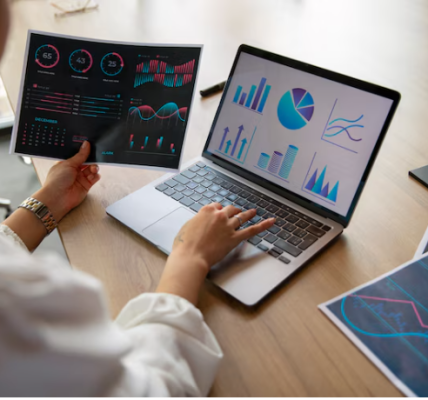As we progress further into the digital age, data analytics continues to evolve at a rapid pace. The upcoming decade promises a plethora of innovations and advancements that will reshape how businesses, governments, and individuals harness the power of data. This article explores the key trends in data analytics that are expected to dominate the next ten years, offering insights into how they will influence various sectors.
1. The Proliferation of Artificial Intelligence and Machine Learning
Artificial Intelligence (AI) and Machine Learning (ML) have already made significant inroads into data analytics, but the next decade will see these technologies becoming even more integral. AI and ML will enhance predictive analytics, enabling organizations to forecast trends with greater accuracy and speed. Advanced algorithms will not only process vast amounts of data but also learn from it, improving their performance over time. This self-improving capability will make data analytics more efficient and effective, leading to better decision-making across industries.
2. Real-Time Data Processing
The demand for real-time data processing is set to grow exponentially. With the rise of the Internet of Things (IoT) and the increasing volume of streaming data, businesses will need to process and analyze data as it is generated. This trend will drive the development of more sophisticated real-time analytics platforms that can handle large-scale data flows. Real-time analytics will enable companies to react swiftly to changing conditions, optimize operations on the fly, and deliver personalized experiences to customers.
3. The Integration of Edge Computing
Edge computing is set to transform data analytics by moving computation closer to the data source. This approach reduces latency and bandwidth usage, making it ideal for applications that require real-time analysis, such as autonomous vehicles, smart cities, and industrial IoT. By processing data at the edge of the network, organizations can achieve faster insights and more responsive systems. The next decade will see significant advancements in edge computing technologies, making them more accessible and scalable.
4. Enhanced Data Privacy and Security
As data breaches and cyber threats become more prevalent, there will be a heightened focus on data privacy and security. New regulations and standards will emerge to protect sensitive information, and organizations will invest heavily in robust security measures. Techniques such as differential privacy, homomorphic encryption, and secure multi-party computation will gain traction, allowing for secure data analysis without compromising privacy. Ensuring data integrity and confidentiality will be paramount in building trust with consumers and stakeholders.
5. The Rise of Augmented Analytics
Augmented analytics, which leverages AI and ML to automate data preparation, insight generation, and explanation, is set to transform the analytics landscape. This trend will democratize data analytics by making it more accessible to non-technical users. Automated insights and natural language processing (NLP) interfaces will enable business users to interact with data intuitively and derive meaningful conclusions without deep technical expertise. Augmented analytics will empower more people to make data-driven decisions, fostering a culture of analytics across organizations.
6. Growth of Data-as-a-Service (DaaS)
Data-as-a-Service (DaaS) will become increasingly popular as companies look for flexible and scalable ways to access and analyze data. DaaS providers offer cloud-based data solutions that can be easily integrated with existing systems, providing organizations with on-demand access to data and analytics tools. This model allows businesses to leverage external data sources and advanced analytics capabilities without the need for substantial infrastructure investments. The next decade will see a proliferation of DaaS offerings, catering to diverse industry needs.
7. Expansion of Blockchain in Data Analytics
Blockchain technology, known for its role in cryptocurrencies, will find new applications in data analytics. The immutable and transparent nature of blockchain makes it an ideal solution for ensuring data integrity and traceability. In the coming years, blockchain will be used to create secure data sharing ecosystems, where stakeholders can collaborate and share information with confidence. Additionally, smart contracts on blockchain will automate and enforce data governance policies, further enhancing data reliability and trustworthiness.
8. The Convergence of Big Data and Advanced Analytics
The convergence of big data and advanced analytics will continue to drive innovation. Organizations will increasingly combine massive datasets with sophisticated analytical techniques to uncover hidden patterns and insights. This integration will enable more accurate predictions, deeper customer understanding, and improved operational efficiency. As big data technologies mature, they will become more user-friendly and accessible, allowing a broader range of businesses to harness their power.
9. Ethical and Responsible AI
With the growing reliance on AI in data analytics, ethical considerations will become paramount. The next decade will see a stronger emphasis on developing responsible AI frameworks that address issues such as bias, transparency, and accountability. Organizations will need to ensure that their AI systems are fair and unbiased, and that the decision-making processes are explainable. Ethical AI will be crucial in gaining public trust and avoiding negative societal impacts.
10. The Evolution of Data Literacy
As data becomes central to business strategy, data literacy will emerge as a critical skill. Organizations will invest in training programs to enhance the data literacy of their workforce, enabling employees at all levels to understand and leverage data effectively. This trend will drive the development of more intuitive and user-friendly analytics tools, making it easier for individuals to interact with data. A data-literate workforce will be better equipped to extract value from data and contribute to the organization’s success.
Data Analytics in Future
Looking forward, the future of data analytics is poised to be more dynamic and influential than ever before. The integration of AI and ML will not only enhance the capabilities of data analytics but will also make it more autonomous, reducing the need for human intervention in many analytical processes. This will lead to faster and more accurate insights, allowing organizations to remain agile in a constantly changing environment.
Furthermore, as the volume of data continues to grow, the importance of real-time processing and edge computing will become even more pronounced. Organizations that can leverage these technologies effectively will gain a significant competitive advantage, as they will be able to make informed decisions faster than their competitors.
The focus on data privacy and security will also drive innovation in encryption and anonymization techniques, ensuring that data can be used effectively without compromising individual privacy. This will be particularly important in industries such as healthcare and finance, where sensitive information is routinely processed.
Additionally, the rise of augmented analytics and Data-as-a-Service will democratize access to powerful analytics tools, allowing smaller businesses and non-technical users to harness the power of data. This democratization will lead to a more level playing field, where companies of all sizes can compete based on their ability to leverage data effectively.
To thrive in the ever-changing landscape of this field, prioritizing education and training is essential. Opting for a comprehensive Data Analytics Course in Delhi, Noida, Agra Mumbai & all other cities in India can equip individuals with the requisite skills and knowledge to succeed in this dynamic realm.
Conclusion:
The next decade will see data analytics become even more integral to business strategy and operations. Organizations that embrace these trends and invest in the necessary technologies and skills will be well-positioned to thrive in the data-driven future. As we continue to push the boundaries of what is possible with data analytics, the potential for innovation and growth is virtually limitless.





